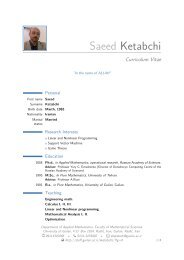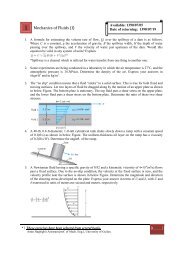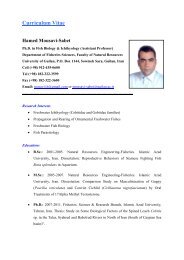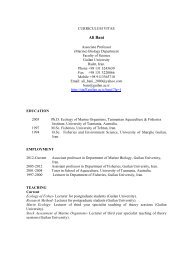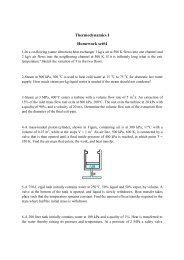Medical Tourism in Developing Countries
Medical Tourism in Developing Countries
Medical Tourism in Developing Countries
- No tags were found...
Create successful ePaper yourself
Turn your PDF publications into a flip-book with our unique Google optimized e-Paper software.
Inequalities <strong>in</strong> Health Care ● 175fewer diseases and lower child mortality. They have a longer work<strong>in</strong>g lifeand so contribute to the economy over a longer period. If they are healthy,they miss fewer days of work. They also work more <strong>in</strong>tensively, and theirlabor productivity is higher. Good health thus <strong>in</strong>creases their personal<strong>in</strong>come, enabl<strong>in</strong>g them to consume and contribute to aggregate demand.Their longevity <strong>in</strong>duces them to save for the future and thereby promote<strong>in</strong>vestment. With higher <strong>in</strong>comes, they participate <strong>in</strong> the fiscal economy bypay<strong>in</strong>g taxes on their <strong>in</strong>come. Healthy parents have fewer children becausemore of them will survive. Lower child mortality means there are fewerpregnancies so women will not leave the labor force as often. Healthy childrenare more likely to go to school and study, improv<strong>in</strong>g their futureproductivity.<strong>Medical</strong> <strong>Tourism</strong> and Public Health:Crowd<strong>in</strong>g Out and Crowd<strong>in</strong>g InImprovements <strong>in</strong> health care are related to economic development both exante and ex post. In other words, causality does not occur <strong>in</strong> one directionor the other, but rather <strong>in</strong> both simultaneously. There is, <strong>in</strong> fact, a selfre<strong>in</strong>forc<strong>in</strong>gcycle, one <strong>in</strong> which development leads to improved health care,which <strong>in</strong> turn leads to enhanced development, and so on. It is not clear,though, how to achieve the <strong>in</strong>itial stimulus <strong>in</strong> either improvements <strong>in</strong>health care or expansion of the economy to set the cycle <strong>in</strong> motion.<strong>Medical</strong> tourism might provide the stimulus that will set the cycle <strong>in</strong>motion.However, such a stimulus is not straightforward as medical tourism canhave both a negative and a positive effect on public health. Indeed, it cancrowd out public health or it can have a crowd<strong>in</strong>g-<strong>in</strong> effect. While the neteffects vary from country to country, the key elements of both argumentsare discussed below.Crowd<strong>in</strong>g Out of Public HealthIt is easy to understand why medical tourism <strong>in</strong> LDCs receives attention.It has buzz and it is lucrative. It br<strong>in</strong>gs <strong>in</strong> foreign currency, it is housed <strong>in</strong>visibly impos<strong>in</strong>g build<strong>in</strong>gs, and it uses modern technology that counts <strong>in</strong>the global development race. <strong>Medical</strong> tourism is <strong>in</strong> the limelight, <strong>in</strong> thenews, and <strong>in</strong> the government conference halls. It provides great photo ops.Compare that to the dismal picture of public health. Indeed, considerablyless flashy is regular deworm<strong>in</strong>g <strong>in</strong> remote villages. Public health issues donot receive the attention that they deserve. In other words, medical tourism






